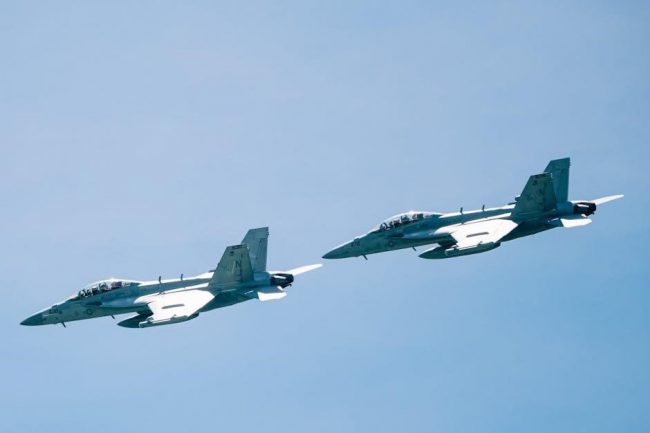The keel-laying ceremony for the Constellation-class guided-missile frigate marked a significant milestone in the US Navy’s fleet modernization․ Held at Fincantieri Marinette Marine in Wisconsin, this event symbolizes the Navy’s commitment to advancing its surface combat capabilities for future challenges․
1․1․ Background of the Constellation-Class Program
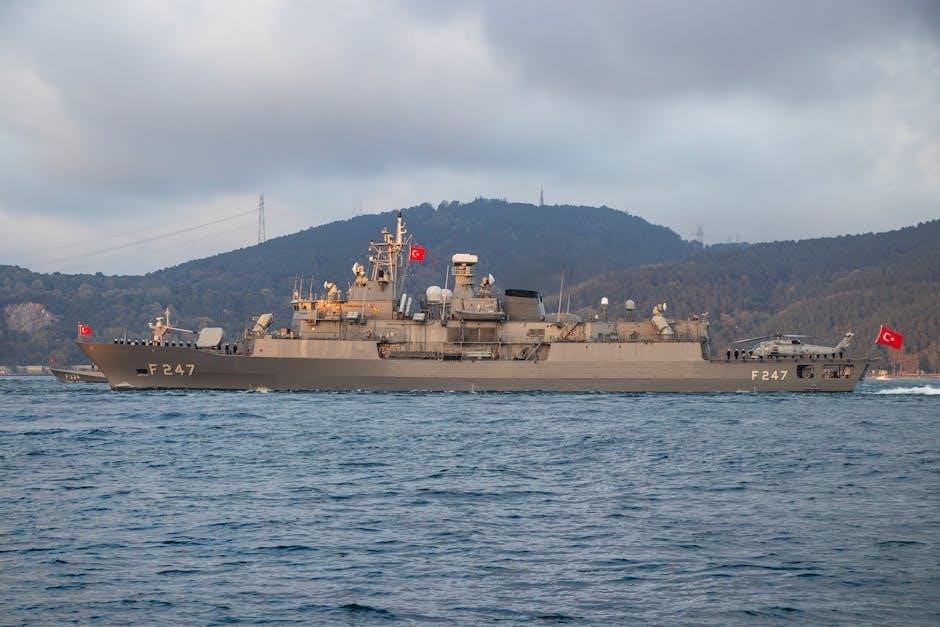
The Constellation-class guided-missile frigate program represents a significant step in the US Navy’s effort to modernize its surface fleet․ Designed as the next-generation small surface combatant, this class of ships aims to address emerging threats and enhance the Navy’s ability to operate in contested environments․ The program was initiated to replace older frigate classes and provide a more capable, versatile platform for multi-mission operations․
The Constellation-class is based on the European FREMM (European Multi-Purpose Frigate) design, leveraging proven technology to ensure reliability and performance․ With a focus on anti-submarine warfare, anti-surface warfare, and air defense, these frigates are intended to bolster the Navy’s distributed maritime operations․ The program also reflects the Navy’s strategic shift toward ships that can integrate advanced weapons and sensors, ensuring dominance in future conflicts․
The keel-laying ceremony for the lead ship, USS Constellation (FFG 62), marked the official start of construction․ This milestone underscores the Navy’s commitment to expanding its fleet capabilities and maintaining technological superiority․ The Constellation-class is expected to play a critical role in the Navy’s long-term strategy, supporting operations across the globe;
1․2․ Significance of the Keel-Laying Ceremony
The keel-laying ceremony for the Constellation-class guided-missile frigate holds profound significance as a symbolic and operational milestone․ This event marks the official commencement of the ship’s construction, transitioning the project from design and planning to physical realization․ It is a tradition steeped in history, dating back to the early days of shipbuilding, where the laying of the keel signifies the backbone of the vessel․
For the US Navy, this ceremony represents a commitment to fleet modernization and readiness․ The Constellation-class frigates are designed to address critical gaps in the Navy’s capabilities, particularly in anti-submarine and anti-surface warfare․ By initiating the construction of these advanced warships, the Navy is reaffirming its dedication to maintaining maritime superiority and ensuring national security in an increasingly competitive global environment․
Moreover, the keel-laying ceremony serves as a moment of unity and pride for the shipbuilders, military personnel, and dignitaries involved․ It highlights the collaborative effort required to bring such a complex project to fruition, embodying the spirit of innovation and resilience that defines the Navy’s mission․
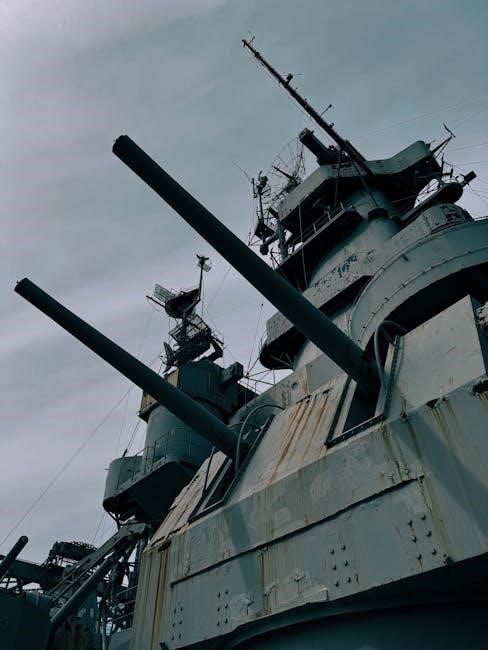
Design and Capabilities of the Constellation-Class Frigate
The Constellation-class frigate, based on the FREMM design, offers modular flexibility and advanced combat systems․ Equipped with the Aegis Combat System, it enhances the Navy’s capabilities in anti-submarine, anti-surface, and anti-air warfare, ensuring superior performance in multi-domain operations․
2․1․ Ship Specifications and Dimensions
The Constellation-class guided-missile frigate is designed to meet the US Navy’s requirements for a next-generation surface combatant․ With a full load displacement of approximately 7,291 tons, the frigate measures 496 feet (151․18 meters) in length and 65 feet (19․8 meters) in beam․ Its draft is estimated at around 15․3 feet (4․66 meters), enabling operational flexibility in various maritime environments․ The ship is built for speed, with a top speed exceeding 26 knots (48 km/h), and a range of over 6,000 nautical miles (11,110 kilometers) at a cruising speed of 16 knots (30 km/h)․ The frigate’s design emphasizes modularity, allowing for easy integration of future upgrades and mission-specific systems․ Crewed by approximately 140 personnel, the ship also accommodates additional mission crews for specialized operations․ Based on the proven European FREMM (Fregata Europea Multi-Missione) design, the Constellation-class combines advanced capabilities with reliability, ensuring it remains a versatile asset for the Navy’s strategic objectives․
2․2․ Advanced Weapon Systems and Technology
The Constellation-class guided-missile frigate is equipped with cutting-edge weapon systems and technologies, designed to address modern maritime threats․ The ship features a multi-mission capability, integrating surface-to-air, anti-ship, and anti-submarine warfare systems․ Its armament includes the Mk 41 Vertical Launch System (VLS), capable of launching a variety of missiles, such as the Standard Missile-2 (SM-2) for air defense and the Harpoon missile for anti-ship strikes․ Additionally, the frigate is equipped with advanced gun systems, including a 5-inch (127mm) Mk 45 gun and smaller-caliber weapons for close-range defense․
The ship’s combat management system is centered around the Aegis Combat System, which provides unparalleled situational awareness and fire control capabilities․ The AN/SPY-6 Air and Missile Defense Radar (AMDR) enhances the ship’s ability to detect and track airborne and ballistic missile threats․ The Constellation-class also incorporates cyber and electronic warfare capabilities, ensuring operational dominance in contested environments․ Its modular design allows for seamless integration of future technologies, ensuring the frigate remains a formidable asset for decades․
2․3․ Propulsion and Performance
The Constellation-class guided-missile frigate is powered by a Combined Diesel-Electric and Gas (CODLAG) propulsion system, designed to optimize efficiency and performance․ This system integrates diesel generators, electric motors, and a gas turbine, enabling the ship to achieve speeds in excess of 26 knots (48 km/h)․ The frigate’s propulsion system ensures quiet operations, reducing its acoustic signature and enhancing stealth capabilities, particularly during anti-submarine warfare missions․
The ship’s range is sufficient for global deployments, making it a versatile asset for extended maritime operations․ Its maneuverability and endurance enable it to operate effectively in both open ocean and littoral environments․ The propulsion system’s flexibility allows for efficient cruising at lower speeds and rapid acceleration when required, ensuring the frigate can meet the demands of multi-mission operational requirements․ This advanced propulsion technology underscores the Constellation-class’s role as a next-generation surface combatant, capable of addressing a wide range of threats in an evolving maritime landscape․
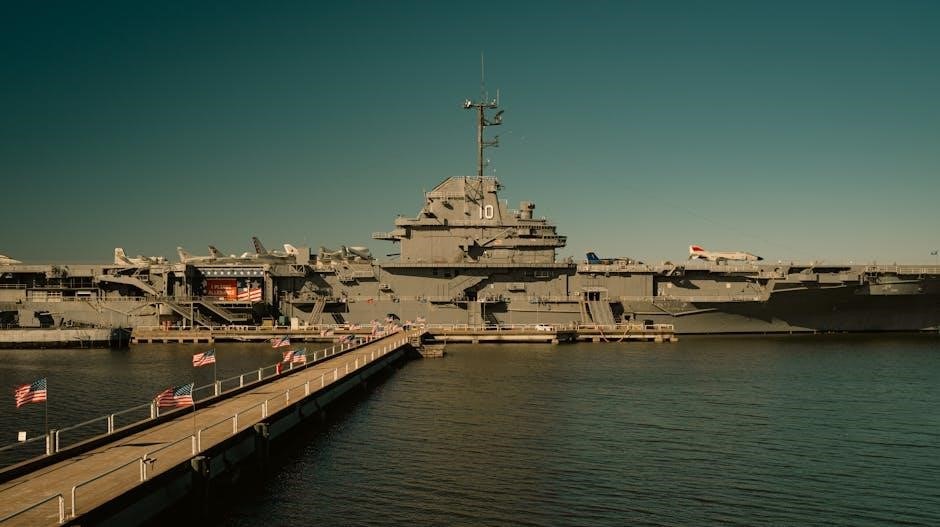
Construction and Manufacturing
Fincantieri Marinette Marine leads the construction of the Constellation-class frigate, with the keel-laying ceremony marking the official start of assembly․ The shipyard was awarded a $526 million contract to build the first vessel, ensuring advanced manufacturing techniques and quality control․
3․1․ Fincantieri Marinette Marine’s Role
Fincantieri Marinette Marine plays a pivotal role in the construction of the Constellation-class guided-missile frigate․ As the prime contractor, the company was awarded a $526 million contract to design and build the first ship in the class․ The keel-laying ceremony, held at their shipyard in Marinette, Wisconsin, underscores their responsibility for assembling the vessel’s core structure and integrating advanced systems․
The company’s expertise in constructing high-performance warships, combined with its experience in managing complex naval programs, makes it a critical partner for the US Navy․ Fincantieri Marinette Marine is also responsible for ensuring the frigate meets the Navy’s operational requirements, including its multi-mission capabilities and advanced technology integration․
The success of the Constellation-class program hinges on the company’s ability to deliver a cutting-edge design based on the European FREMM frigate, tailored to US Navy specifications․ This collaboration highlights Fincantieri Marinette Marine’s commitment to innovation and its role in strengthening the Navy’s fleet for future challenges․
3․2․ The Keel-Laying Process
The keel-laying ceremony for the Constellation-class guided-missile frigate is a traditional milestone marking the official start of a ship’s construction․ The keel, the backbone of the vessel, is laid and authenticated during this event․ Dignitaries, including the Secretary of the Navy and other high-ranking officials, attended the ceremony held at Fincantieri Marinette Marine in Wisconsin․
During the process, the keel is carefully positioned and welded into place, symbolizing the ship’s transition from design to physical reality․ This step is crucial as it sets the foundation for the subsequent stages of shipbuilding, including the installation of propulsion systems, weapons, and advanced electronics․
The ceremony also includes the authentication of the keel, a symbolic act where a specially selected coin is placed under the keel for good luck․ This tradition, rooted in naval history, signifies the commitment to building a robust and capable warship․ The successful completion of the keel-laying process paves the way for the next phases of construction, ensuring the Constellation-class frigate meets its intended operational capabilities․
3․3․ Challenges in Shipbuilding
The construction of the Constellation-class guided-missile frigate presents several challenges, primarily due to its complex design and advanced technological requirements․ One major issue is the integration of the FREMM-based platform with US Navy-specific systems, which demands precise engineering and testing to ensure compatibility and performance․
Another challenge involves the supply chain, as the shipbuilding process relies on numerous suppliers providing specialized components․ Delays in delivering critical materials or subsystems could significantly impact the construction timeline․ Additionally, the program has faced criticism for proceeding with construction before achieving a fully stable design, raising concerns about potential costly modifications in the future․
Workforce and production capacity are also areas of concern․ Building next-generation warships requires a skilled labor force, and scaling up production while maintaining quality standards poses logistical difficulties․ Budget constraints and the risk of cost overruns further complicate the process, as the program must balance affordability with the delivery of a highly capable vessel․
Finally, managing the intricate balance between innovation and timely delivery remains a significant challenge․ The Navy must ensure that the Constellation-class frigates meet their operational requirements without sacrificing quality or encountering substantial delays․
Strategic Implications
The Constellation-class frigate represents a critical leap in the US Navy’s ability to counter emerging threats and project power globally․ Its advanced capabilities enhance fleet modernization efforts, address anti-access/area-denial challenges, and strengthen the Navy’s role in global maritime security, while also generating international interest for potential exports․
4․1․ Role in the US Navy’s Fleet Modernization
The Constellation-class guided-missile frigate plays a pivotal role in the US Navy’s fleet modernization efforts․ Designed to replace the aging FFG-7 Oliver Hazard Perry-class frigates, this next-generation ship enhances the Navy’s capability to perform multi-domain operations․ The Constellation-class represents a significant step forward in addressing the need for a more agile, lethal, and survivable surface combatant․ By integrating advanced sensors, weapons, and networking capabilities, these frigates will bolster the Navy’s ability to operate in contested environments and counter evolving threats․ The program aligns with the Navy’s long-term vision of constructing a more distributed and resilient fleet, capable of meeting the challenges of great power competition․ The keel-laying ceremony for the lead ship, USS Constellation (FFG 62), underscores the Navy’s commitment to delivering a cutting-edge platform that will serve as a cornerstone of its future surface fleet․ This initiative not only strengthens the Navy’s operational readiness but also signals its dedication to maintaining maritime supremacy in an increasingly complex global landscape․
4․2․ Addressing A2/AD Challenges
The Constellation-class guided-missile frigate is specifically designed to counter Anti-Access/Area Denial (A2/AD) threats, which are critical challenges in modern naval warfare․ These frigates will be equipped with advanced sensors, such as the AN/SPY-6(V) Air and Missile Defense Radar (AMDR), enabling superior detection and tracking of enemy missiles and aircraft․ The integration of the Aegis Combat System will further enhance the ship’s ability to engage multiple threats simultaneously, providing a robust defense against anti-ship missiles and other A2/AD systems․ Additionally, the Constellation-class will carry a range of weapons, including SM-2 and SM-6 missiles, ensuring a layered defense capability․ The frigate’s networking capabilities, such as Link 16 and the Future Combat System (FCS), will enable seamless coordination with other ships, submarines, and aircraft, enhancing the Navy’s ability to operate in contested environments․ By addressing A2/AD challenges, the Constellation-class frigate will play a critical role in maintaining the US Navy’s operational freedom and ensuring dominance in maritime theaters․
4․3․ Export Potential and International Interest
The Constellation-class guided-missile frigate has garnered significant international interest, with potential export opportunities emerging․ The ship’s advanced capabilities, including its multi-mission design and integration of the Aegis Combat System, make it an attractive option for allied navies seeking to modernize their fleets․ Countries like Greece have expressed interest in the Constellation-class, recognizing its versatility in addressing regional security challenges․ The frigate’s compatibility with NATO standards and its ability to operate alongside other European ships, such as those based on the FREMM design, further enhance its export potential․
The US Navy’s decision to base the Constellation-class on proven technologies, such as the AN/SPY-6 radar, also makes it a compelling choice for international partners; Additionally, the modular design of the frigate allows for customization to meet specific operational requirements of foreign navies․ This adaptability, combined with the ship’s advanced weapon systems, positions the Constellation-class as a key player in the global naval market, fostering stronger alliances and interoperability between the US and its allies․
As the program progresses, the Constellation-class is expected to strengthen international partnerships and bolster collective maritime security efforts worldwide․
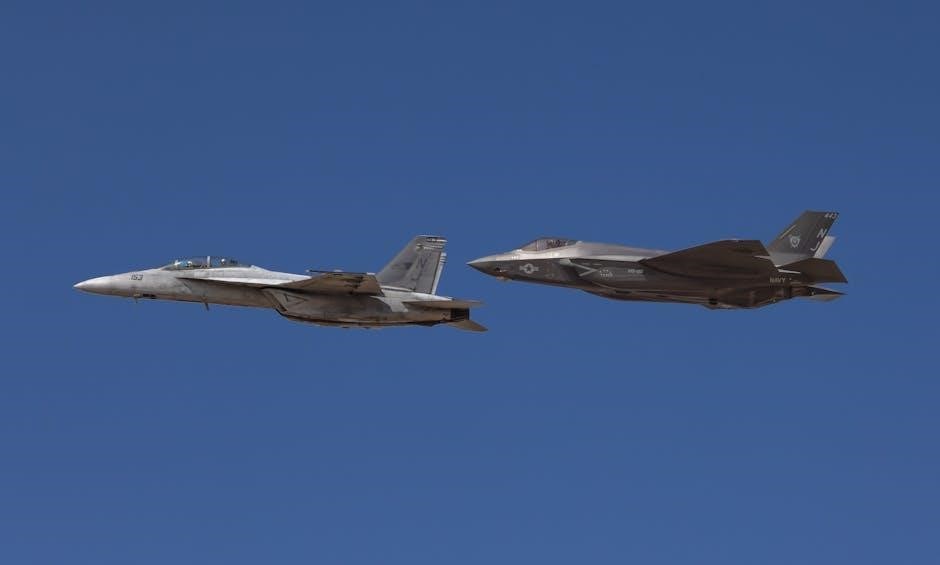
Ceremony and Stakeholders
The keel-laying ceremony for the Constellation-class frigate was attended by key stakeholders, including Fincantieri Marinette Marine, the Secretary of the Navy, and Naval leaders․ This milestone event drew significant media attention, reflecting strong public interest in the program․
5․1․ Key Attendees and Dignitaries
The keel-laying ceremony for the Constellation-class guided-missile frigate was attended by prominent figures, including the Secretary of the Navy, the Chief of Naval Operations, and other senior naval officers; Representatives from Fincantieri Marinette Marine, the prime contractor, were also present, showcasing the strong collaboration between the Navy and industry partners․ Dignitaries highlighted the significance of this milestone, emphasizing its importance for the Navy’s future operational capabilities․ The event drew significant media coverage, underscoring public and governmental interest in the program․
5․2․ Public and Media Reception
The keel-laying ceremony for the Constellation-class guided-missile frigate garnered significant attention from both the public and the media․ Major outlets, including AP and The Washington Post, covered the event, highlighting its importance as a milestone in the Navy’s modernization efforts․ The ceremony was widely shared on social media platforms, with photos and updates posted by the US Navy and Fincantieri Marinette Marine․ Public interest was particularly high in Wisconsin, where the event took place, as it underscored the state’s role in shipbuilding and national defense․ The Navy’s official channels emphasized the program’s potential to enhance maritime security and readiness․ However, some analysts raised concerns about the program’s timeline and budget, reflecting ongoing debates about the Navy’s acquisition strategies․ Overall, the event was well-received, with many viewing it as a step toward strengthening the Navy’s future capabilities․
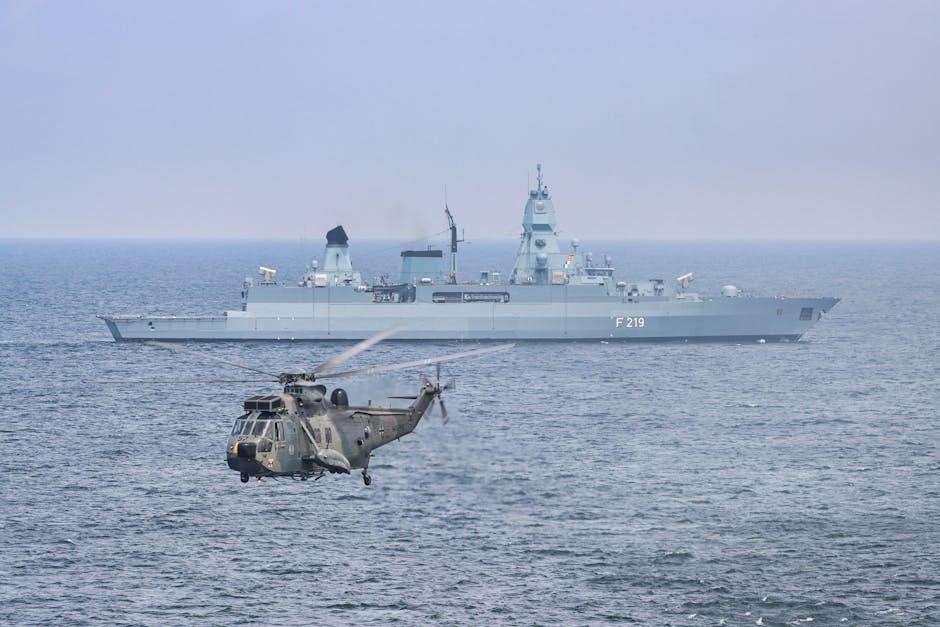
Future Plans and Expectations
The Constellation-class is expected to significantly enhance the Navy’s surface fleet capabilities․ Plans include the delivery of multiple frigates over the next decade, with the first ship anticipated to enter service by the late 2020s․ The program aims to ensure the Navy remains technologically superior and operationally ready to meet future maritime challenges․ The frigates are projected to play a critical role in fleet modernization, offering advanced missile systems and improved maneuverability․ Long-term goals include integrating these ships into global operations, ensuring readiness across contested regions, and maintaining the Navy’s strategic edge․ These expectations underscore the importance of the Constellation-class in safeguarding national security and advancing U․S․ maritime interests․
6․1․ Upcoming Milestones in Construction
Following the keel-laying ceremony, the Constellation-class frigate program will progress through several critical construction phases․ The next major milestone will be the assembly of the ship’s hull, which involves integrating pre-fabricated modules․ This process ensures efficient construction and minimizes delays․ Once the hull is fully assembled, the focus will shift to installing advanced propulsion systems and combat technologies․ The shipyard will also begin outfitting the vessel with radar, missile systems, and electronic warfare capabilities․ After these systems are integrated, the frigate will undergo rigorous testing phases, including harbor trials and sea trials, to ensure operational readiness․ The Navy anticipates that the lead ship, USS Constellation (FFG 62), will be delivered in the late 2020s, with subsequent vessels following at regular intervals․ These milestones are essential to meeting the Navy’s timeline for deploying the Constellation-class as part of its fleet modernization strategy․ Each step brings the program closer to delivering a cutting-edge warship capable of addressing emerging maritime threats․ The successful completion of these milestones will be a testament to the collaboration between the Navy and its industrial partners․
6․2․ Expected Operational Capabilities
The Constellation-class guided-missile frigates are designed to deliver robust multi-mission capabilities, enhancing the US Navy’s operational effectiveness․ These ships will feature advanced radar systems, including the AN/SPY-6 Air and Missile Defense Radar (AMDR), which significantly improves detection and tracking of air and missile threats․ The frigates will also be equipped with the Aegis Combat System, enabling superior command and control for anti-air, anti-submarine, and anti-surface warfare․ Additionally, they will carry a range of weapons, including Standard Missiles, Harpoon anti-ship missiles, and Mk 50 torpedoes, providing versatility in combat scenarios․ The vessels will support the Navy’s Distributed Maritime Operations (DMO) concept, operating seamlessly with other ships, submarines, and aircraft to dominate the maritime domain․ Their speed, maneuverability, and endurance make them ideal for missions ranging from homeland defense to forward presence in contested regions․ The Constellation-class frigates are expected to set a new standard for affordability and capability, ensuring the Navy remains a dominant force in the 21st century․ Their operational capabilities will be critical in addressing A2/AD challenges and maintaining maritime supremacy․
6․3․ Long-Term Goals for the Constellation-Class
The long-term vision for the Constellation-class guided-missile frigates is to establish a robust and sustainable surface combatant fleet capable of meeting the evolving demands of maritime security․ These ships are central to the Navy’s strategy to modernize its forces and maintain dominance across the world’s oceans․ By leveraging the Constellation-class, the Navy aims to enhance its ability to deter aggression, protect critical sea lanes, and project power in contested regions․ The program also seeks to ensure interoperability with allied nations, fostering stronger partnerships and coalition operations․ Over time, the class is expected to undergo continuous upgrades, incorporating emerging technologies such as autonomous systems, artificial intelligence, and advanced propulsion methods․ This adaptability will ensure the frigates remain relevant and effective against future threats․ Additionally, the Constellation-class is designed with scalability in mind, allowing for the integration of new weapons and sensors as they become available․ Ultimately, the long-term goal is to create a fleet of versatile, high-performance frigates that can operate seamlessly within the Navy’s Distributed Maritime Operations (DMO) framework, ensuring enduring maritime superiority․
The keel-laying ceremony for the Constellation-class guided-missile frigate represents a landmark moment in the US Navy’s efforts to modernize its fleet and address emerging maritime challenges․ This milestone underscores the Navy’s commitment to delivering advanced, multi-mission capable ships that can operate effectively in a rapidly changing global security environment․ The Constellation-class is poised to play a critical role in strengthening the Navy’s surface combatant force, ensuring readiness to counter adversaries, and maintaining freedom of navigation across critical waterways․ With its cutting-edge technology, versatility, and strategic importance, the Constellation-class frigates are expected to serve as a cornerstone of US maritime power for decades to come․ As the program progresses, the successful delivery of these ships will not only enhance the Navy’s operational capabilities but also reinforce its leadership in global maritime security․ The keel-laying ceremony is just the beginning of an exciting new chapter in the Navy’s history, one that promises innovation, resilience, and enduring strength at sea․
